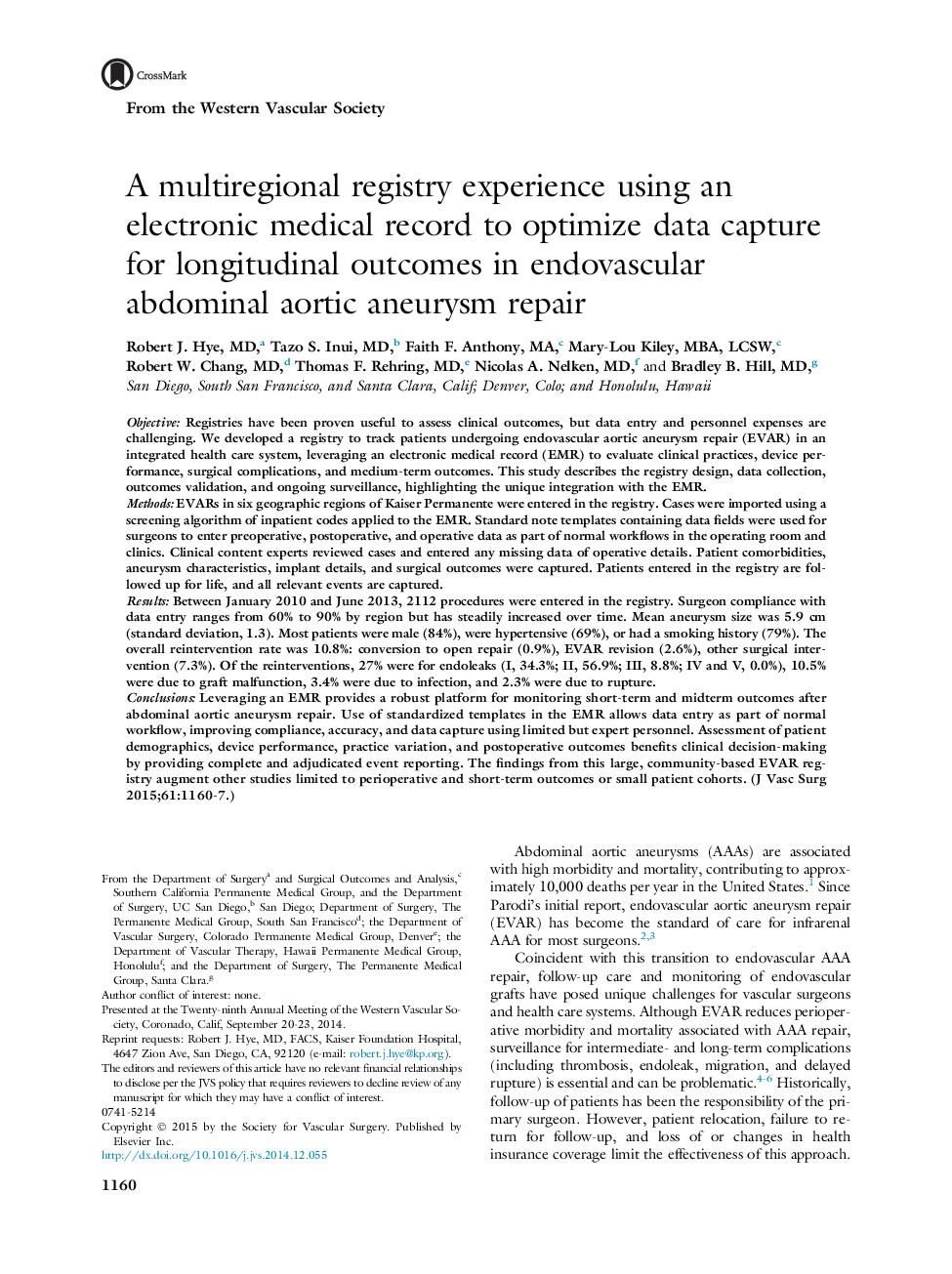| کد مقاله | کد نشریه | سال انتشار | مقاله انگلیسی | نسخه تمام متن |
|---|---|---|---|---|
| 2988776 | 1179829 | 2015 | 8 صفحه PDF | دانلود رایگان |
ObjectiveRegistries have been proven useful to assess clinical outcomes, but data entry and personnel expenses are challenging. We developed a registry to track patients undergoing endovascular aortic aneurysm repair (EVAR) in an integrated health care system, leveraging an electronic medical record (EMR) to evaluate clinical practices, device performance, surgical complications, and medium-term outcomes. This study describes the registry design, data collection, outcomes validation, and ongoing surveillance, highlighting the unique integration with the EMR.MethodsEVARs in six geographic regions of Kaiser Permanente were entered in the registry. Cases were imported using a screening algorithm of inpatient codes applied to the EMR. Standard note templates containing data fields were used for surgeons to enter preoperative, postoperative, and operative data as part of normal workflows in the operating room and clinics. Clinical content experts reviewed cases and entered any missing data of operative details. Patient comorbidities, aneurysm characteristics, implant details, and surgical outcomes were captured. Patients entered in the registry are followed up for life, and all relevant events are captured.ResultsBetween January 2010 and June 2013, 2112 procedures were entered in the registry. Surgeon compliance with data entry ranges from 60% to 90% by region but has steadily increased over time. Mean aneurysm size was 5.9 cm (standard deviation, 1.3). Most patients were male (84%), were hypertensive (69%), or had a smoking history (79%). The overall reintervention rate was 10.8%: conversion to open repair (0.9%), EVAR revision (2.6%), other surgical intervention (7.3%). Of the reinterventions, 27% were for endoleaks (I, 34.3%; II, 56.9%; III, 8.8%; IV and V, 0.0%), 10.5% were due to graft malfunction, 3.4% were due to infection, and 2.3% were due to rupture.ConclusionsLeveraging an EMR provides a robust platform for monitoring short-term and midterm outcomes after abdominal aortic aneurysm repair. Use of standardized templates in the EMR allows data entry as part of normal workflow, improving compliance, accuracy, and data capture using limited but expert personnel. Assessment of patient demographics, device performance, practice variation, and postoperative outcomes benefits clinical decision-making by providing complete and adjudicated event reporting. The findings from this large, community-based EVAR registry augment other studies limited to perioperative and short-term outcomes or small patient cohorts.
Journal: Journal of Vascular Surgery - Volume 61, Issue 5, May 2015, Pages 1160–1167
